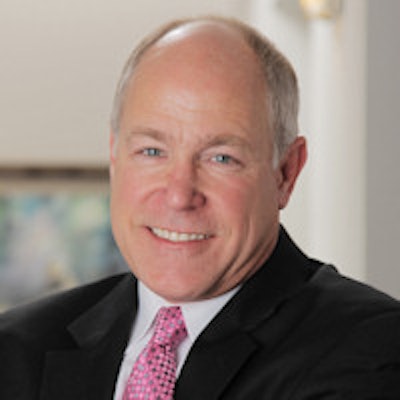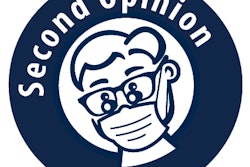
The evolution of restorative dental technologies and materials is more than just a history of drilling and filling. Whereas silver and gold were the predominant choices for more than 100 years, ceramics, composites, and zirconia are now used. Alongside this change in materials has come changes in technology, patient convenience, and marketing opportunities, according to Douglas M. Schulz, DDS.
 Douglas M. Schulz, DDS.
Douglas M. Schulz, DDS.Dr. Schulz is in private practice in Overland Park, KS. He has also worked with the Pacific Partnership, a charitable mission with the U.S. Navy to bring medical and dental care to those in need across the entire Pacific region.
In his practice, Dr. Schulz has been using cone-beam CT and 3D imaging technology since the late 1990s.
"The 3D technology has been the biggest game changer in our practice," he said. "3D allows you to see so much more than we could ever see in 2D x-rays."
Material evolution
As materials have evolved, so has Dr. Schulz's practice.
"From the 1850s until the 1970s, silver and gold were the predominant choices for fillings," he said. "You did gold inlays and onlays, or you did these big silver fillings."
But the issue of cracked teeth and microfractures would arise. Patients asked why restorations were not lasting.
"So while amalgam worked, we as dentists started asking about why teeth crack and have microfractures and break off," he said. "We started asking why this restoration won't last forever. Well, it wasn't designed to last forever. "
Then ceramics entered the picture.
"I was looking for another avenue that would make a porcelain inlay and a porcelain onlay," Dr. Schulz said. "A myth in the literature is that when you bond a tooth with a composite you strengthen the tooth. That is a misconception."
An advantage of using ceramics is that the patient can be treated more conservatively.
"It literally still fills a hole just like the old silver filling, but when you put ceramic in a tooth you can get a stronger tooth, and you can treat more conservatively," he said.
Restorations changed when new technology was introduced.
"That's where Cerec (Sirona) dentistry changed the way dentists looked at restoring teeth," Dr. Schulz said. "You don't have to grind the tooth down to a nub and put a crown on every tooth; it gives you lots of options," he stated.
Today, the newest situation is the ability to mill whole zirconia restorations and to do same-day dentistry with zirconia, he noted. "I'm looking forward to adding that to my practice," he said.
Zirconia fits the mold of what most dentists are comfortable with, according to Dr. Schulz.
"We can get a crown back from a lab, clean up the temporary and the cement, and then we can cement the restoration on," he said. "This is something we have been doing for eons, and now we can do it in the office with cementable zirconia."
Emergency patients
For Dr. Schulz, the advantages of technology go far beyond what happens when the patient is in the chair.
"I want to be known in my area as the practice where, if patients break a tooth and need a crown, they can come to our office, and we can fix it that day," he said.
He gave an example of a patient who had a racquetball injury in the morning before a 2 p.m. business meeting. The patient was playing racquetball and was hit in the mouth, breaking off a tooth.
"We fit him in and put him together to make him look as good as he looked before, save for the bruised lip and swelling," Dr. Schulz said.
The important part, he noted, was that the patient's smile was back, he could talk, and he didn't have a jagged front tooth.
While that kind of service sounds ideal for the practice and the patient, it takes coordination and patience from all involved, he said.
"You have an extra chair in the office," said Dr. Schulz, noting that you also have assistants who are trained to handle a situation such as this.
Because of technology improvements, some of the work can be delegated, he noted.
"Some of the technology today is so good and so easy to use that you can train assistants to do a majority of it," he said. "The technology has become better and better and doesn't require as much 'doctor time' as it used to."
Dr. Schulz offered another example in which he told a patient that a restoration might take longer than the usual time -- a couple of hours versus 90 minutes -- to be completed.
The emergency patient has to be patient, he noted, but he added "I can work around our already scheduled patients."
Technology is what allows this treatment to happen, Dr. Schulz said.
"When you do Cerec dentistry, you have downtime," he said. "You are going to do whatever is necessary in the chair and prep the tooth, and then there is some time that the restoration has to be milled, which is anywhere from eight to 12 minutes."
During that time, Dr. Schulz has patients use his practice's massage chairs while he works with other patients.
As your practice evolves into a same-day dentistry practice, there are still times when you may have to send a restoration to a lab, such as for aesthetics or anterior work that may not be an efficient use of your time.
"For patients who have experienced same-day dentistry, they act hurt when you have to send it to a lab," he noted.
Sleep apnea
Schulz noted that treating patients for sleep apnea is a growing part of his practice.
"Sleep dentistry is a burgeoning part of dentistry, and we'll probably see more of these patients," he said.
New sleep apnea 3D visualization with SICAT Air software (Sirona) to highlight constrictions in the airway and determine an effective jaw position is scheduled to be introduced in the next months, he noted.
"Every patient that comes into our practice, we do a 3D scan," he said. "Sometimes you look at an airway and it looks like two straws side by side. I had a patient who weighed 280 pounds and was breathing through two thin straws. I wanted to ask, 'How are you alive?' "
His practice is also making more referrals to sleep studies.
"Without sleep studies, you can't appropriately treat the patient," Dr. Schulz said. "Patients sometimes balk at [the treatment], but we've never had a quantitative way to measure what is happening in the airway until now."
In his practice, patients have a preappliance scan, then another one three months after beginning to use the appliance.
The sleep apnea market is hardly touched by the general dentist today. "Yet over the next 10 years, it will become a big part of practices," he noted.
What is important to Dr. Schulz is treating the person, not just the tooth.
"When you change a person's sleep, for instance, you change their well-being," he said. "We are not just tooth dentists anymore. As much as we do on teeth, it's a person we are helping. These new technologies allow us to see more and do more, because whatever we can do to impact and improve a patient's life, that is what we are here for."



















